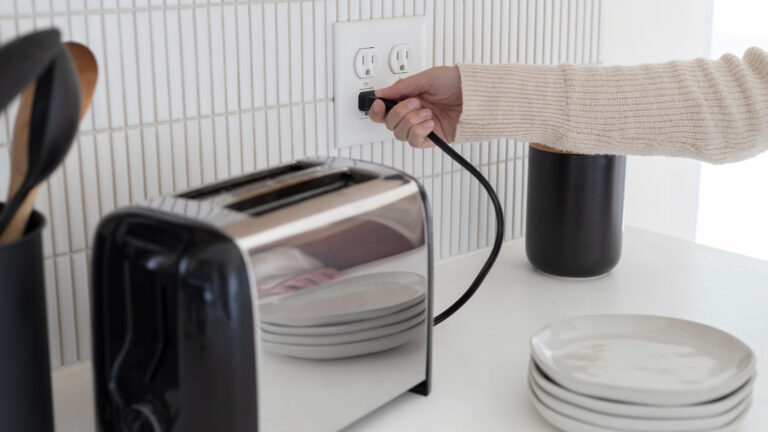If you’ve ever asked yourself,
“Do I really need to unplug that appliance for safety purposes?”
You’re not alone.
Whether it’s the toaster, the coffee maker, or the phone charger in the wall, many homeowners are unsure whether unplugging appliances when not in use actually makes a difference.
Some say it’s safer. Others say it’s a hassle. So what’s the truth?
In this post, we’ll answer one of the most common homeowner questions head-on:
Is unplugging appliances the safer option, or just a good habit gone overboard?
The Short Answer: Yes, Unplugging Appliances Is Safer (But Not Always Necessary)
Let’s cut to the chase:
Yes—unplugging unused appliances is the safer option.
Why? Because it reduces:
- Fire risk
- Electrical surges
- Phantom energy use (more on that below)
But here’s the deal: Not every appliance needs to be unplugged.
The key is knowing what to unplug, why it matters, and when it’s worth the effort.
Fire Safety: Where Unplugging Really Matters
Most home fires caused by electrical issues are the result of overheated cords, faulty outlets, or devices and appliances left plugged in too long.
According to the National Fire Protection Association, electrical failures or malfunctions were responsible for 13% of US home structure fires in 2015–2019.
Here’s a quick rule of thumb:
| Unplug These Appliances When Not in Use | Appliances That are Safe to Leave Plugged In* |
| Toasters | Refrigerators |
| Coffee makers | Washing machines |
| Hair dryers | Dishwashers |
| Phone chargers | Ovens |
| Power strips | Microwaves (built-in) |
*Appliances designed to stay plugged in typically have built-in safety features, but still need regular inspection.
What About Surges?
Here in Florida, where lightning strikes are common and power flickers happen more often than we’d like, surge protection matters.
Unplugging electronics like:
- Computers
- TVs
- Gaming consoles
…can protect them from sudden spikes in voltage that damage internal circuits.
Surge protectors help—but they’re not foolproof. If a storm’s rolling in, unplugging is still the safest option.
You may also be interested in: 5 Essential Electrical Tips for Storm-Proofing Your Home
Phantom Energy: The Cost of “Idle” Power Use
Many appliances use energy even when they’re turned off. This is called phantom load, or standby power.
It might not seem like much, but it adds up, especially if you’ve got dozens of devices plugged in 24/7.
Here’s what phantom load can cost you annually:
| Device | Standby Power Use | Yearly Cost* |
| Cable box | 25–35 watts | $25–$40 |
| Game console | 10–15 watts | $10–$20 |
| Phone charger (plugged in) | 0.5–2 watts | $1–$5 |
*Based on Florida average energy rates
Unplugging these or using smart power strips can cut down on unnecessary energy waste and lower your electric bill.
The Smarter Approach: Unplug What You Can, Protect What You Can’t
No, you don’t need to go around your house unplugging the refrigerator every night.
But yes, you should:
- Unplug small kitchen and bathroom appliances when not in use
- Use smart plugs or timers for devices you forget about
- Install whole-home surge protection (especially in Florida)
- Regularly inspect cords and outlets for wear or heat
And if you’re going away for more than a day or two?
It’s smart to unplug as much as possible. Why risk it?
Final Take: Is Unplugging Worth It?
Yes. It’s a simple habit that increases safety, reduces energy costs, and gives you peace of mind.
At the end of the day, it’s about control—knowing what’s using power, what’s at risk, and how to protect your home from unnecessary hazards.

